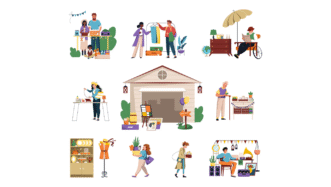LESSON OVERVIEW
With this art lesson plan students learn and put into practice expressions that can be used to talk about art. They also watch a video, paraphrase and share personal opinions on art.
WARM-UP & EXPRESSIONS TO TALK ABOUT ART
To get students interested in the lesson topic, this lesson plan starts with a discussion about the role of art in our lives and encourages students to share their personal opinions and experiences. Next, students analyse ten half phrases and try to join them with the corresponding halves from another column to create ten expressions that we can use to talk about art (e.g. stir emotions, react differently, I’m not a big fan of art).The following task gives students a chance to check how well they understand the new language and also to practise a bit their paraphrasing skills. Students read six sentences with some words in brackets and need to replace them with the correct expressions from the previous task (students may have to modify their forms). When the new sentences are ready, students discuss two of them. Next, they work in pairs and move on to six photos showing how art can be understood by different people (e.g. a sculpture, jewellery, a banana skin). Their task is to discuss which of them should be considered art and why.
VIDEO & DISCUSSION
The second part of the lesson starts with a video about art. At first, students listen for gist – to check whether the objects from the photos in the previous task should be considered art. Then, they focus on answering five specific questions. The listening practice is followed by a discussion in which students read three opinions they already heard in the video and have to decide if they agree or disagree with them. In the last task of this art lesson plan, they come up with two more statements about art, exchange them with their partners and keep on talking about art.
WORKSHEETS
Subscribe to unlock these and many other Standalone lesson lesson plans with the Unlimited plan
Subscribe











This was a really fun lesson! My students were able to use a lot of the new expressions they learned here. Thank you!
That’s so nice to read that your students enjoyed the lesson.
Thank you for the plan! It’s amusing lesson.
My students loved this lesson! Thank you!
Happy to hear that 🙂